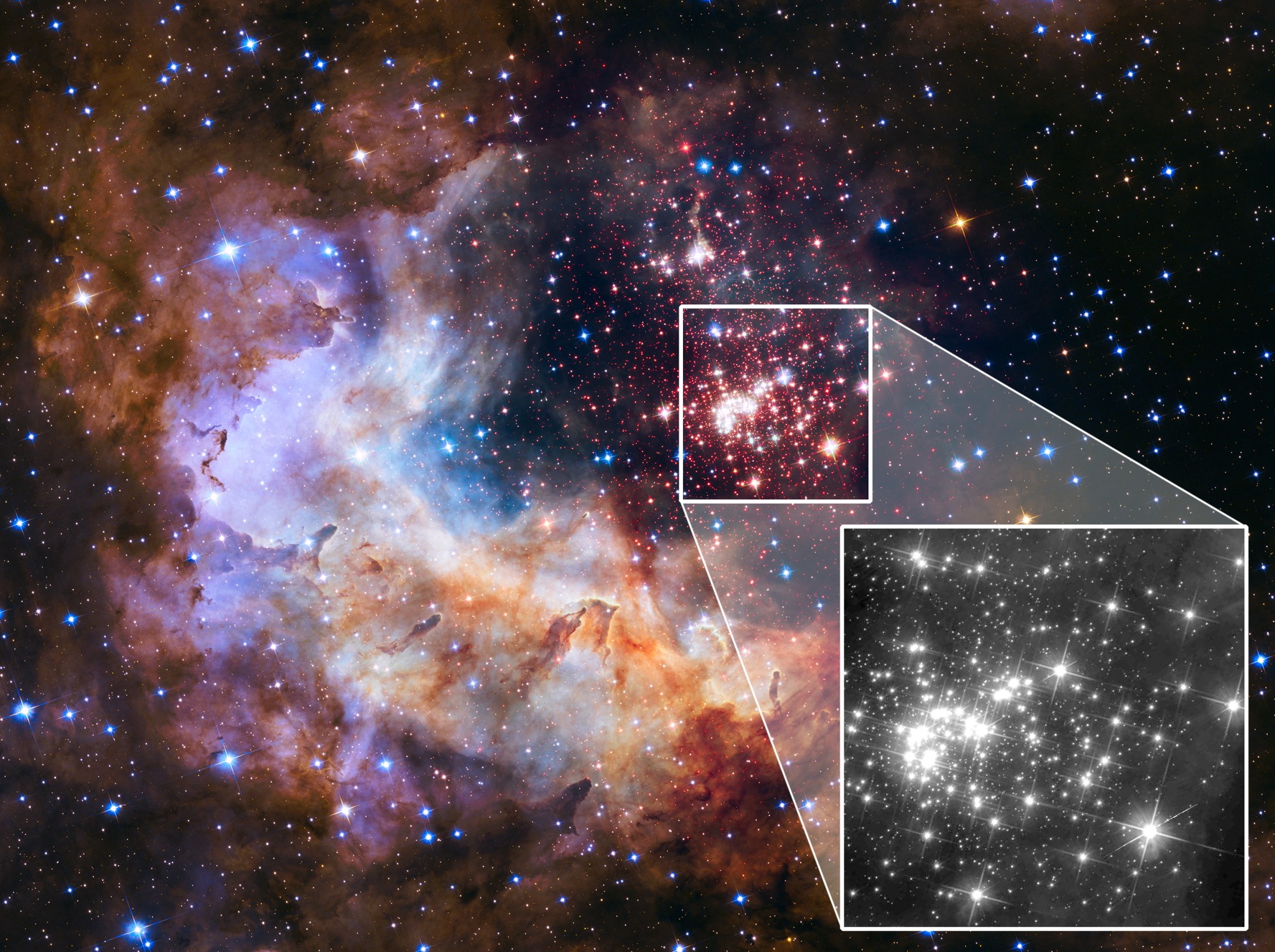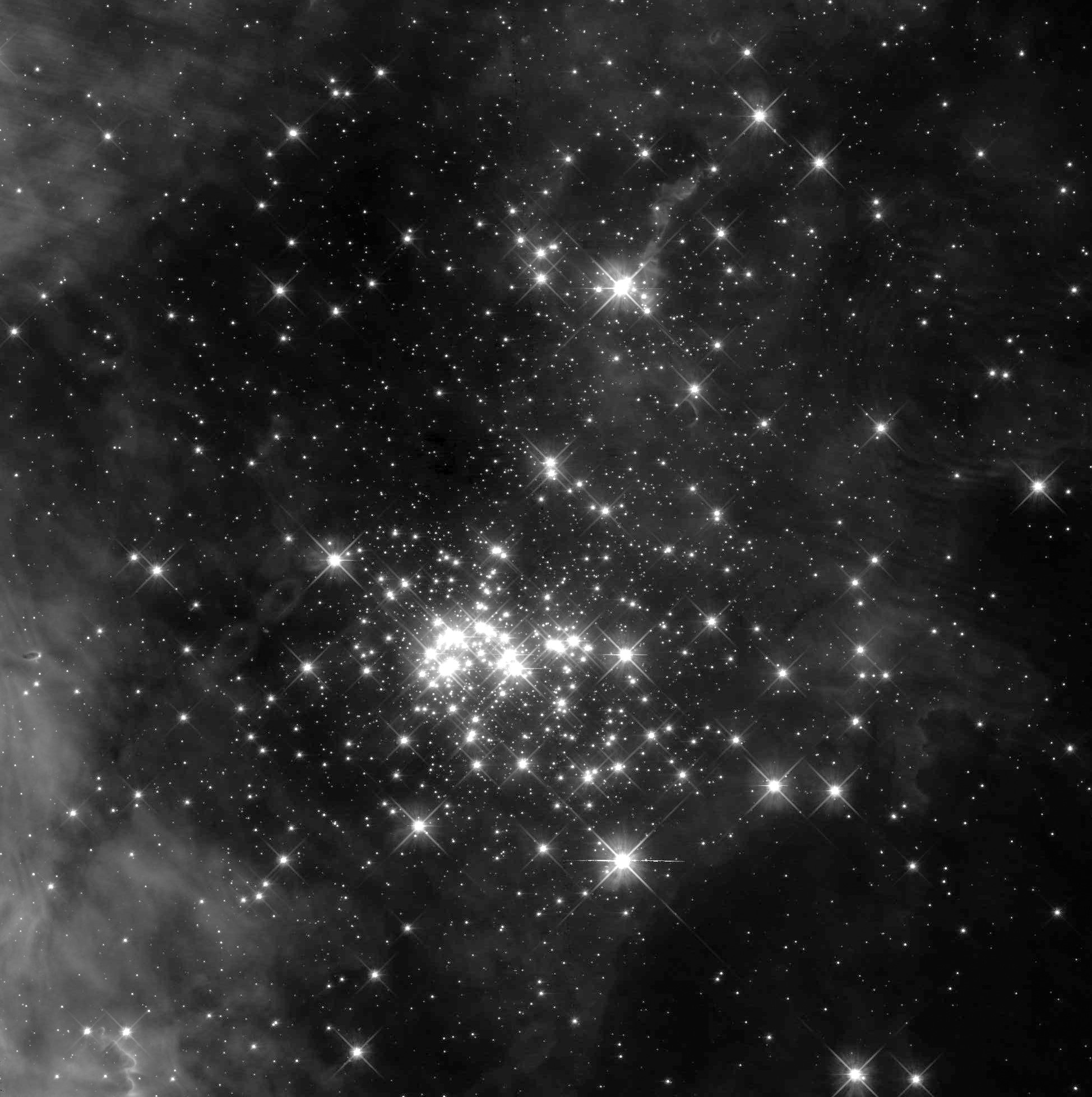NASA’s Hubble Space Telescope is helping identify potential celestial targets for the James Webb Space Telescope through a series of preparatory science observations to be completed before Webb is ready to make observations of its own.

This preparatory science program began in 2016 in response to the desire of astronomers to use Hubble observations to set the stage for Webb. The program marked the first time astronomers were encouraged to submit science proposals for Hubble observations that could pave the way for Webb’s own observations. So far, 40 proposals have been approved.
Using multiple observatories to analyze the same objects can identify aspects of those objects that using one observatory alone cannot. Hubble was designed to primarily observe the universe through visible light (though it is also able to see into the ultraviolet and near-infrared), while Webb is specifically designed to observe the universe in infrared light, through both direct imaging and spectroscopy. Spectroscopy measures the spectrum of light, which scientists analyze to determine physical properties of what is being observed, including temperature, mass, and chemical composition.
Several preparatory science proposals in the program promise to use Hubble to deliver observational data Webb is not designed to collect. Hubble is able to see parts of the visible-light spectrum that Webb is not able to observe, and so it can fill potential observational gaps. For example, Hubble can examine exoplanets in light across the full electromagnetic spectrum available to it, with emphasis on the ultraviolet and blue wavelengths. Coupled with Webb’s infrared capabilities, both telescopes will deliver a more complete picture of the exoplanet systems.
Other proposals have a goal of using Hubble to carry some of the workload for Webb, allowing astronomers to use their observation time with Webb more efficiently. Astronomers could use Hubble to survey multiple targets and determine the best strategy for Webb to perform further analysis. Depending on the data Hubble returned, astronomers would know to observe targets with Webb in a broad range of infrared wavelengths or to focus on smaller wavelength ranges, thus giving them a better starting point for their own observations.
Hubble and Webb: Probing protoplanetary disks
One specific preparatory science proposal was submitted by a team of scientists led by Elena Sabbi, an astronomer at the Space Telescope Science Institute in Baltimore, Maryland. Sabbi and her team are using Hubble to survey the young, massive star cluster Westerlund 2, located about 20,000 light-years from Earth in the constellation of Carina. They have spent one year observing the cluster and plan to observe it for two additional years with Hubble.

One of the primary science objectives for Webb is to observe the birth of stars and protoplanetary systems, and Sabbi’s observations promise to catalog hundreds of potential targets on which Webb could follow up. Sabbi and her team are using Hubble to look for binary stars in their earliest stages of development, where they are likely to be surrounded by protoplanetary disks — disks of dense gas and dust that encircle newly formed stars and eventually coalesce into planets.
Binary star systems contain two stars in orbit around a common central point, and some of these systems have been found to host planets. Astronomers are still trying to understand how planets form and evolve in such an environment. Sabbi said Westerlund 2’s youth makes it a prime candidate for understanding this, because as a cluster ages, binary stars often separate and are ejected from the cluster. The team’s first year of observations showed Westerlund 2 contained many more binary stars than expected, based on other observations of star clusters.
“Massive clusters are very crowded places, like [New York City’s] Times Square during New Year’s Eve,” explained Sabbi. “And, just as how in Times Square the pushing and pulling of other people can separate you from your friends, the gravitational force of nearby stars can separate a star from its companion.”
The Webb telescope’s near-infrared spectrograph (NIRSpec) instrument could analyze the composition of protoplanetary disks Sabbi’s team finds around the binary stars. Armed with this data, the team could then discover how planet formation differs between single and binary star systems.
“The light that comes from these planetary systems during formation cannot be seen by Hubble,” Sabbi explained. “Hubble sees the light coming from the star, but in Webb data the light will be dominated by the planetary disk.”
The veteran space telescope
Located so close to Earth, Hubble has benefitted from multiple servicing missions to upgrade its components and science instruments, and thus its ability to survey the universe. Launched in 1990, Hubble has been orbiting Earth and observing the cosmos for 27 years — but that does not mean it’s ready for retirement.
“Hubble is at the peak of its scientific capability,” said Jim Jeletic, deputy project manager for the Hubble program at NASA’s Goddard Space Flight Center in Greenbelt, Maryland. He added that the veteran space telescope “still has redundancy in all of its critical systems” and could continue its mission “well into the next decade,” meaning Hubble and Webb could work in tandem for years to come.
The James Webb Space Telescope, the scientific complement to NASA’s Hubble Space Telescope, will be the most powerful space telescope ever built. Webb is an international project led by NASA with its partners, ESA (European Space Agency) and CSA (Canadian Space Agency).
For more information about the Webb telescope, visit: www.webb.nasa.gov or www.nasa.gov/webb
For more information about the Hubble telescope, visit: www.nasa.gov/hubble




























